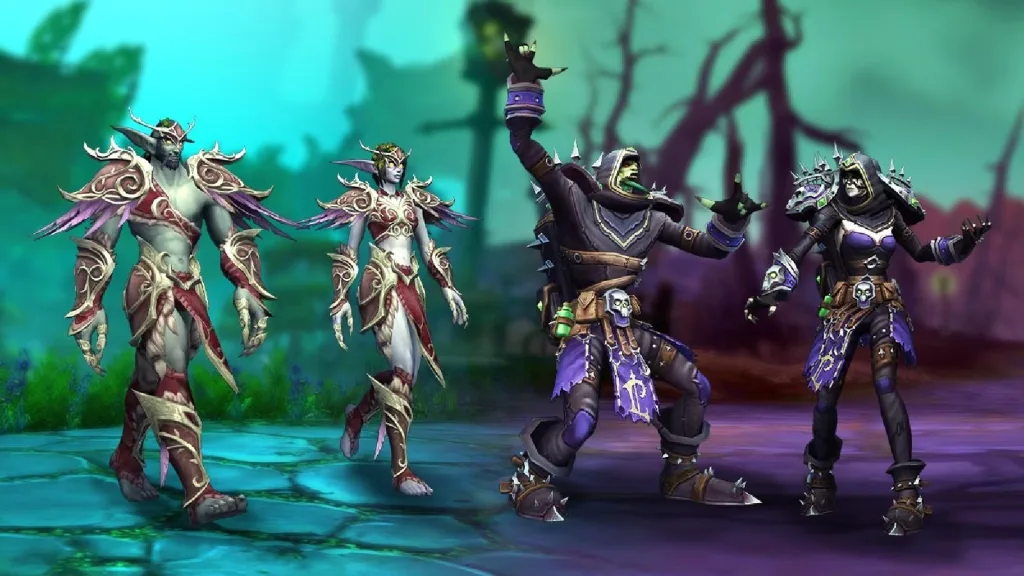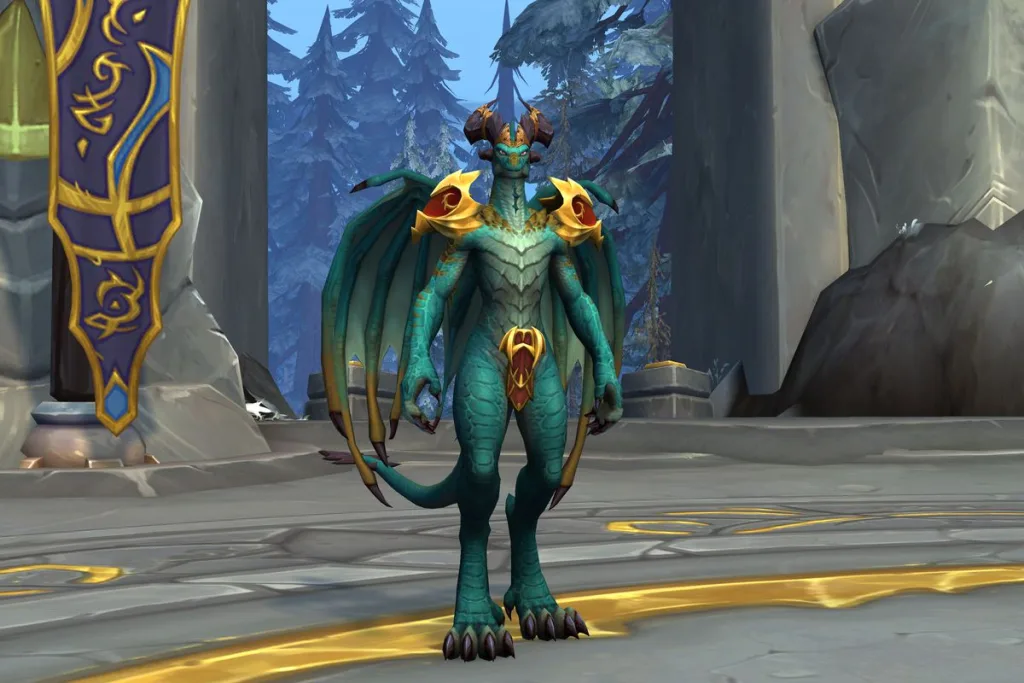In the vast world of World of Warcraft (WoW), hit rating plays a crucial role in determining the success of your attacks. Whether you’re a melee or caster DPS, having a sufficient amount of hit rating is paramount in ensuring your attacks connect with your target, maximizing your damage output and overall effectiveness in battle.
Hit rating directly affects your chance to hit an opponent with your attacks. A higher hit rating means a greater likelihood of landing a successful hit, while a lower hit rating increases the chances of your attacks missing the mark. As a result, hit rating is considered one of the most important secondary attributes for DPS classes.
Before Patch 6.0.2, hit rating was a primary concern for players striving to optimize their characters. Achieving the hit cap, which was the point where your chance to miss was reduced to its lowest possible value, was crucial for maximizing damage potential. The hit cap varied depending on the type of attack used and the level of your opponent.
For melee DPS, the hit cap was 5% against an opponent of equal level when using a two-handed weapon, and 24% when dual-wielding. This meant that a player needed enough hit rating to reach these respective caps in order to minimize the chance of their attacks missing.
Caster DPS classes had a separate hit cap for spellcasting. The hit rating required to reach this cap was slightly different, with 12.6 hit rating granting 1% spell hit chance. This ensured that spells would connect with their intended targets, maximizing the effectiveness of casters in combat.
However, with Patch 6.0.2, the hit rating secondary attribute, along with expertise, was removed from the game. The developers made this decision as they felt that reaching the hit and expertise caps felt more like a penalty rather than an enjoyable aspect of gameplay. Players often viewed these stats as mandatory rather than fun, leading to frustration and a lack of flexibility in character customization.
The removal of hit rating and expertise meant that players no longer needed to worry about reaching specific caps to minimize the chance of missing attacks. Instead, the focus shifted towards other secondary attributes that enhanced overall DPS, such as critical strike rating, haste rating, and versatility.
Hit rating used to be a vital attribute for maximizing your damage potential in WoW. It directly affected your chance to hit opponents with your attacks, ensuring that they landed successfully. However, with the removal of hit rating and expertise in Patch 6.0.2, players no longer need to worry about reaching specific caps. Instead, they can focus on other secondary attributes to enhance their overall DPS.
What Does Hit Rating Do In Wow Classic?
In World of Warcraft Classic, hit rating is a crucial attribute that directly affects your ability to successfully land melee or ranged attacks on your opponents. Having a higher hit rating increases your chance of hitting your target, thereby reducing the likelihood of your attacks missing.
Here’s a breakdown of what hit rating does in WoW Classic:
1. Increased Chance to Hit: Hit rating helps improve your accuracy in combat by increasing your chance to hit your target. This means that with higher hit rating, you will have a lower chance of missing your attacks.
2. Reduced Miss Chance: The base chance to miss with maximum weapon skill against an opponent of equal level is 5% for two-handed weapons and 24% for dual wield. However, by stacking hit rating, you can reduce this miss chance and increase your overall damage output.
3. Importance for Melee and Ranged Classes: Hit rating is particularly important for melee and ranged classes as they heavily rely on landing successful attacks. Classes like warriors, rogues, hunters, and enhancement shamans benefit greatly from having high hit rating to ensure their attacks connect reliably.
4. Interaction with Weapon Skill: Hit rating synergizes with your weapon skill level. The higher your weapon skill, the lower the chance of your attacks missing. However, even with maximum weapon skill, there is still a base miss chance. Hit rating further reduces this base miss chance, making it an essential stat for reaching optimal combat performance.
5. Stat Priority: Depending on your class and role, hit rating may be an important stat to prioritize in your gear and itemization. Melee and ranged DPS classes often aim to reach the hit cap, which is the point where their chance to hit is at its maximum (usually 9% for dual wielders and 6% for others). Tanks also benefit from having a decent amount of hit rating to ensure their threat-generating abilities land consistently.
To summarize, hit rating in WoW Classic improves your chance to hit your target, reducing the likelihood of your attacks missing. It is a vital attribute for melee and ranged classes, especially those focused on dealing damage. By stacking hit rating, you can increase your accuracy and overall effectiveness in combat.

When Did They Remove Hit Rating?
The hit rating secondary attribute was removed from the game with the release of Patch 6.0.2. This change was implemented by the developers to address the issue of players perceiving hit rating and expertise as mandatory rather than enjoyable stats. The removal of hit rating was part of a broader overhaul of the stat system in World of Warcraft, aimed at streamlining gameplay and reducing unnecessary complexities.
The decision to remove hit rating was driven by the developers’ desire to create a more engaging and enjoyable experience for players. In the past, reaching the hit and expertise caps was seen as a necessary requirement for optimal performance, but it was often viewed as a burden rather than a fun aspect of gameplay.
By removing hit rating, the developers aimed to eliminate the need for players to focus on this particular stat and instead allow them to focus on more interesting and engaging aspects of the game. This change was part of a larger effort to simplify the game’s mechanics and make it more accessible to both new and experienced players.
The removal of hit rating in Patch 6.0.2 was a significant change that aimed to enhance the enjoyment of World of Warcraft by removing what the developers saw as a penalty rather than an augmentation.
Do You Need Hit Rating For PVP?
Hit rating is indeed necessary for PVP in World of Warcraft. In PVP battles, the accuracy of your attacks becomes crucial to ensure that you can successfully land hits on your opponents. Without sufficient hit rating, your attacks may miss, rendering your damage output ineffective and reducing your chances of securing a kill.
For melee or caster DPS classes, hit rating becomes even more essential. As a melee DPS, you rely heavily on physical attacks, and having a high hit rating ensures that your strikes connect with your target consistently. This becomes particularly important when trying to burst down enemies or finish off low-health opponents quickly. On the other hand, as a caster DPS, your spells require hit rating to overcome the resistance of your opponents and successfully deal damage.
Having hit rating in PVP is crucial for both melee and caster DPS classes. It enhances your accuracy, increases your chances of landing hits, and maximizes your damage output. Therefore, players focusing on PVP should prioritize acquiring gear and stats that provide sufficient hit rating to optimize their performance in battles.
How Much Is 1 Spell Hit Rating TBC?
In The Burning Crusade (TBC), 1 spell hit rating is equivalent to 0.0794% spell hit chance. This means that for every 12.6 spell hit rating, you gain 1% spell hit chance.
To put it in perspective, here’s a breakdown of the conversion rates for other stats in TBC:
– Block Rating: 1% block chance is gained for every 7.9 block rating.
– Hit Rating: 1% hit chance is gained for every 15.8 hit rating.
It’s important to note that these conversion rates may vary depending on the specific class and specialization you are playing. Different classes have different stat priorities and scaling. Additionally, these conversion rates are specific to TBC and may differ in other expansions or versions of the game.
It’s also worth mentioning that while hit rating is important for melee and ranged attacks, spell hit rating is crucial for spellcasters. It determines the chance for your spells to successfully hit your target, reducing the chance of spells being resisted or missed.
Understanding the conversion rates of these stats can help you make informed decisions when optimizing your character’s gear and stats in TBC.

Conclusion
Hit rating in World of Warcraft is a crucial attribute for any melee or caster DPS player. It determines the chance of successfully landing an attack or spell on an opponent. With a higher hit rating, players have a greater chance of hitting their target and dealing damage.
Previously, hit rating was a secondary attribute that players needed to reach certain caps in order to maximize their effectiveness in combat. However, with Patch 6.0.2, hit rating and expertise were removed from the game. The developers felt that these stats were more of a penalty than an augmentation, and players often regarded them as mandatory rather than enjoyable.
Before the removal of hit rating, the base chance to miss with maximum weapon skill against an opponent of equal level was 5% for two-handed weapons and 24% for dual-wield. To increase this chance, players needed to stack hit rating, with 15.8 rating granting 1% hit chance for melee and ranged attacks, and 12.6 rating granting 1% spell hit chance for casters.
While hit rating is no longer a concern in the current version of World of Warcraft, it was once a vital aspect of character optimization. Players would strive to reach the hit cap to ensure their attacks and spells always connected with their intended target.
Hit rating was an important attribute in World of Warcraft that determined the chance of successfully landing attacks or spells. However, it has been removed from the game in recent updates, as the developers felt it was more of a burden than a fun gameplay element.
